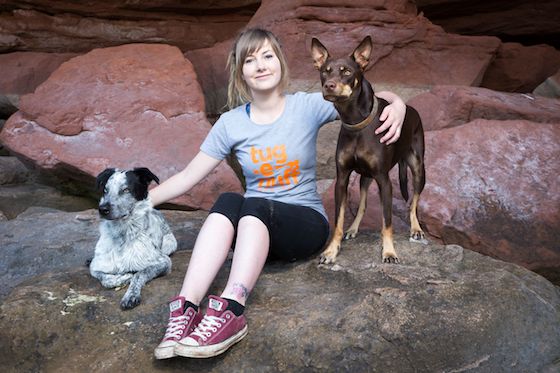It’s sometimes hard to put into words the joy that having a dog in your life brings.
They’re the perfect companions - and they provide many important psychological and physical benefits for us owners, too. Studies prove they help us to exercise, sleep better and boost our general mood.
Once you’ve experienced the happiness that comes with being a pawrent, getting another dog can seem like a no brainer. A second dog means twice the cuddles and twice the love, right?
Often, yes! Did we mention there’s more than 30 dogs in the Tug-E-Nuff family!?

Pros and cons of getting a second dog
Before you buy another water bowl and pooper scoop, and gear up for getting a second dog.... let's look at the pros and cons to consider before welcoming another dog into your life.
1. There’s always a transition period
Dogs thrive on our affections. Bringing another dog into your home will force your dog to compete for your affections and they may not take kindly to this. You might see a new puppy as a companion for your older dog, but your older dog might see the new addition as a threat. It’s important to manage the transition with care and consideration for both dogs.
2. Good training pays off
It can pay double to dedicate time to training your current dog before welcoming in another dog to your family. If your dog has got their basic training nailed, their good habits can rub off on your new arrival.
However, if you use interactive toys as part of your training (and we hope you do!), don’t assume that your new dog will be motivated by the same toys as your current dog.
Every dog is different, which is why we always recommend you choose your Tug-E-Nuff toy based on what motivates your dog as an individual.
Ask yourself these five questions before you buy your new dog toys and remember we’re always on hand to help you choose.

3. Routines can get disrupted
Your older dog probably has a routine - they know when they’re fed, when they go for a walk and when you go to work. Puppies, however, need feeding several times a day and this can throw your older dog off balance.
Your dog may even get jealous or confused when the puppy gets food outside of the normal feeding times. Feed your dog's separately to prevent any problems developing.
And be careful not to overcompensate by feeding your older dog extra! Instead, distract them with a play with their favourite tug toy or offer a small treat.
4. Offer a safe space
Puppies are almost always a handful and an older dog may not take kindly to be being constantly pestered to play.
Likewise, rescues can take a while to settle in to new surroundings, which your current dog may find tough.
Make sure your dog has a safe and familiar place to retreat to to find comfort and solace when things get too chaotic. Your new dog should have a safe space of their own too.

5. Opposites attract
When you’re considering what type of second dog to get, remember that sometimes dogs with different temperaments get on best.
Of course, there are exceptions to this, but gun dogs are often more likely to get on with herding dogs than with other gun dogs, for instance. And female dogs are generally more comfortable with male dogs than with other bitches.
6. Practical matters
Two dogs take up more space and cost more money than one. Make sure you have a big enough house and garden to accommodate two dogs, and that you can afford food, insurance, toys and vet bills for them both.
It’s also important to consider your own lifestyle and whether you have enough free time to take on another dog. Will you be able to dedicate time to walking and training them separately if needs be?
How much harder is it to have 2 dogs?
Having two (or more dogs) can bring an awful lot of joy, but they do require more effort! There are no guarantees about how your new dog will get on with your existing dog, and you need to be willing to adapt to ensure both dogs get their needs met.
We hope this guide to the pros and cons of getting a second dog have helped you with your decision making.
READ NEXT:
5 top tips to help your new puppy settle in
